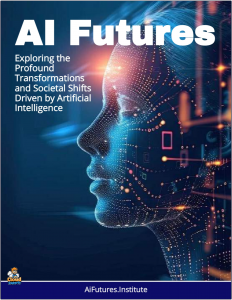What Does the Future of Machine Learning Actually Look Like?
 The future of machine learning is not a distant dream—it’s already accelerating into a transformative force that will reshape work, creativity, and problem-solving.
The future of machine learning is not a distant dream—it’s already accelerating into a transformative force that will reshape work, creativity, and problem-solving.
With models like GPT-5 demonstrating advanced reasoning and seamless handling of text, images, video, and audio, the trajectory is clear: machine learning will become more efficient, accessible, and deeply integrated into daily life.
The global market, currently valued at around $113 billion, is projected to reach $225–300 billion by 2030, growing at a compound annual rate of 36–38%. This growth is driven by breakthroughs in hardware, an explosion of available data, and expanding real-world applications across industries.
Multimodal and generative AI will lead the charge, enabling systems that fluidly process and create across different data types. By 2027–2030, expect AI to generate photorealistic videos, edit multimedia intuitively, and deliver hyper-personalized experiences in marketing, entertainment, and education.
The generative AI market alone is expected to grow at 37.6% annually. At the same time, machine learning is shifting toward edge computing—running directly on devices like phones and IoT sensors for real-time, privacy-preserving processing.
This trend, accelerated by concerns over data breaches, will see local large language models rival cloud performance at a fraction of the cost. By 2028, inference costs could drop by a factor of ten, thanks to optimized architectures like Mixture-of-Experts and the rise of sovereign, on-device AI ecosystems.
Democratizing AI
Democratization will be another defining theme. Automated and no-code machine learning platforms are making model development accessible to non-experts. By 2025, up to 70% of new applications will be built using low-code or no-code tools that automate feature engineering, training, and deployment.
This shift will empower small businesses and citizen developers to harness predictive analytics, levelling the playing field with large corporations. Meanwhile, the long-standing “black box” problem of AI opacity is giving way to explainable AI (XAI).
Driven by regulations like the EU AI Act, future models will not only make decisions but clearly articulate *why*—building trust and enabling safer use in high-stakes fields. Techniques like federated learning, which trains models across decentralized devices without sharing raw data, will become standard for privacy compliance.
New AI Architectural Innovations
Under the hood, architectural innovation is breaking free from the Transformer dominance that defined the past decade. New paradigms like State Space Models (e.g., Mamba) offer linear-time efficiency for long sequences, making them ideal for genomics, time-series forecasting, and real-time robotics.
Self-adaptive large language models that adjust their own weights during inference are emerging, alongside diffusion-based training methods that unlock new capabilities. Looking further out, quantum-machine learning hybrids could tackle problems currently deemed intractable. These advances will power AI agents—autonomous systems capable of reasoning, self-correction, and complex task execution.
From writing code to conducting research, these agents will begin showing early signs of artificial general intelligence (AGI), with some experts predicting human-level performance on standardized tests by 2029.
Across industries, the impact will be profound. In healthcare, machine learning will enable ultra-precise diagnostics—detecting tumors in MRIs with superhuman accuracy—and predictive systems that prevent patient readmissions. Personalized medicine will become routine by 2030. In finance, fraud detection, algorithmic trading, and trend forecasting will be fully automated, while no-code tools allow even small firms to compete.
Sustainability efforts will benefit from AI-optimized energy grids and precision agriculture, potentially improving data center efficiency by 30% and enhancing climate resilience. Robotics, too, will leap forward as multimodal models grant machines physical intelligence and enable multi-agent coordination for tasks like disaster response.
Yet challenges remain. Data quality and bias threaten fairness if left unaddressed, and hallucinations in large models must be eradicated to ensure reliability. Talent shortages could see 85 million jobs go unfilled by 2030, underscoring the need for widespread upskilling.
Regulations will inevitably slow some innovations but are essential for safety and ethics. Compute constraints and the societal impact of job displacement are real concerns—though evidence suggests AI will create more roles than it eliminates, particularly in STEM and AI development itself.
The path to AGI remains debated. Some foresee it by 2027–2028; others place it closer to 2030 or beyond. What’s certain is that we’re moving toward collaborative human-AI systems—tools that anticipate needs, augment intuition, and accelerate discovery.
Brain-computer interfaces and self-teaching models are among the wild cards that could redefine intelligence itself. The future won’t be dystopian domination or utopian harmony—it will be pragmatic augmentation, unlocking breakthroughs in medicine, science, and exploration that we can scarcely imagine today.
The question is not whether machine learning will transform the world, but how we choose to guide it.



